Resonance Detection Method and Realization of Bearing Fault Signal Based on Kalman Filter and Spectrum Analysis
Abstract
1. Introduction
- (1)
- Based on the vibration signal detected by the fiber Bragg grating resonant sensor, an autoregressive model is established and transformed into a state space model of bearing vibration.
- (2)
- Based on the established state equation and observation equation of bearing vibration, a Kalman filter is used to realize state estimation and noise reduction.
- (3)
- Bearing fault diagnosis is realized by the improved autocorrelation envelope spectrum analysis method. The first method proposed is the improved autocorrelation envelope power spectrum, which can extract the fault frequencies and their multipliers. The second method proposed is the autocorrelation envelope maximum entropy spectrum, which can directly extract the bearing failure frequency. The two envelope spectrum lines are pure and the noise interference is small. The bearing fault detection and fault identification are realized.
2. Methods and Principle
2.1. Random Signal Autoregressive Model
2.2. AR Model Order Determination and Parameter Estimation
2.3. Kalman Filter
2.4. Power Spectrum and Improved Autocorrelation Envelope Spectrum Analysis
- (1)
- Autocorrelation function and power spectrum
- (2)
- Improved autocorrelation envelope power spectrum
- (3)
- Autocorrelation envelope maximum entropy spectrum
3. Bearing State Space Model Establishment and Fault Identification Process
3.1. Bearing State Space Model Establishment
3.2. Fault Detection and Identification Process of Bearing
4. Design of Faulty Bearing Experiment Platform
5. Experiment Data Analysis
5.1. Determination of AR Model Order and Model Parameters of Faulty Bearing Vibration Signal
5.2. Bearing Vibration Signal Analysis and Bearing Fault Detection and Diagnosis
- (1)
- If the working background of the bearing is noisy and the ambient noise is large, there will be more envelope components obtained through envelope analysis. It is easy to cause the fault signal envelope to be mixed with the noise envelope, and it is not easy to distinguish.
- (2)
- The envelope of the fault characteristic frequency is not obvious. The largest envelope in the envelope spectrum corresponds to the 7fIR frequency of the bearing fault characteristic frequency. The analysis of the envelope is required to determine the bearing fault location.
- (1)
- There is no noise envelope in the envelope spectrum. The obtained envelopes are all multipliers of the fault characteristic frequency.
- (2)
- The envelope spectrum curve is smooth without any slight noise interference.
5.3. Compare with Existing Method
- (1)
- Compare with wavelet transform
- (2)
- Compare with empirical mode decomposition
6. Analysis of Bearing Fault Signal of Case Western Reserve University
7. Conclusions
Author Contributions
Funding
Institutional Review Board Statement
Informed Consent Statement
Data Availability Statement
Conflicts of Interest
References
- Xiao, L.; Zhang, X.; Lu, S.; Xia, T.; Xi, L. A novel weak-fault detection technique for rolling element bearing based on vibrational resonance. J. Sound Vib. 2019, 438, 490–505. [Google Scholar] [CrossRef]
- Hou, B.; Wang, D.; Chen, Y.; Wang, H.; Peng, Z. Interpretable online updated weights: Optimized square envelope spectrum for machine condition monitoring and fault diagnosis. Mech. Syst. Signal Process. 2022, 109, 108779. [Google Scholar] [CrossRef]
- Abhilash, S.; Pradeep, R.; Rejith, R.; Bijudas, C. Health monitoring of rolling element bearings using improved wavelet cross spectrum technique and support vector machines. Tribol. Int. 2021, 154, 106650. [Google Scholar]
- Randall, R.; Antoni, J. Rolling element bearing diagnostics-A tutorial. Mech. Syst. Signal Process. 2011, 25, 485–520. [Google Scholar] [CrossRef]
- Li, C.; Sánchez, V.; Zurita, G.; Lozada, M.; Cabrera, D. Rolling element bearing defect detection using the generalized synchrosqueezing transform guided by time–frequency ridge enhancement. ISA Trans. 2016, 60, 274–284. [Google Scholar] [CrossRef]
- Ahmadi, A.; Petersen, D.; Howard, C. A nonlinear dynamic vibration model of defective bearings—The importance of modelling the finite size of rolling elements. Mech. Syst. Signal Process. 2015, 52–53, 309–326. [Google Scholar] [CrossRef]
- Gupta, P.; Pradhan, M. Fault detection analysis in rolling element bearing: A review. Mater. Today 2017, 4, 2085–2094. [Google Scholar] [CrossRef]
- Djebala, A.; Ouelaa, N.; Hamzaoui, N. Detection of rolling bearing defects using discrete wavelet analysis. Meccanica 2008, 43, 339–348. [Google Scholar] [CrossRef]
- Wang, H.; Chen, J.; Dong, G. Feature extraction of rolling bearing’s early weak fault based on EEMD and tunable Q-factor wavelet transform. Mech. Syst. Signal Process. 2014, 48, 103–119. [Google Scholar] [CrossRef]
- Jiang, R.; Chen, J.; Dong, G.; Liu, T.; Xiao, W. The weak fault diagnosis and condition monitoring of rolling element bearing using minimum entropy deconvolution and envelop spectrum. Proc. Inst. Mech. Eng. 2013, 227, 1116–1129. [Google Scholar] [CrossRef]
- Yao, R.; Jiang, H.; Li, X.; Gao, J. Bearing incipient fault feature extraction using adaptive period matching enhanced sparse representation. Mech. Syst. Signal Process. 2021, 166, 108467. [Google Scholar] [CrossRef]
- Wang, S.; Niu, P.; Guo, Y.; Wang, F.; Li, W. Early diagnosis of bearing faults using decomposition and reconstruction stochastic resonance system. Measurement 2020, 158, 107709. [Google Scholar] [CrossRef]
- Rezazadeh, N.; De Luca, A.; Lamanna, G.; Caputo, F. Diagnosing and Balancing Approaches of Bowed Rotating Systems: A Review. Appl. Sci. 2022, 12, 9157. [Google Scholar] [CrossRef]
- Rezazadeh, N.; Ashory, M.-R.; Fallahy, S. Identifcation of shallow cracks in rotating systems by utilizing convolutional neural networks and persistence spectrum under constant speed condition. J. Mech. Eng. Autom. Control Syst. 2021, 2, 135–147. [Google Scholar] [CrossRef]
- Rezazadeh, N.; De Luca, A.; Perfetto, D. Unbalanced, cracked, and misaligned rotating machines: A comparison between classification procedures throughout the steady-state operation. J. Braz. Soc. Mech. Sci. Eng. 2022, 44, 450. [Google Scholar] [CrossRef]
- Sawalhi, N.; Wang, W.; Becker, A. Vibration signal processing for spall size estimation in rolling element bearings using autoregressive inverse filtration combined with bearing signal synchronous averaging. Adv. Mech. Eng. 2017, 9, 1687814017703007. [Google Scholar] [CrossRef]
- Bastami, A.; Vahid, S. Estimating the size of naturally generated defects in the outer ring and roller of a tapered roller bearing based on autoregressive model combined with envelope analysis and discrete wavelet transform. Measurement 2020, 159, 107767. [Google Scholar] [CrossRef]
- Wu, Y.; Jiang, B.; Wang, W. Incipient winding fault detection and diagnosis for squirrel-cage induction motors equipped on CRH trains. ISA Trans. 2020, 99, 488–495. [Google Scholar] [CrossRef]
- Borghesani, P.; Smith, W.; Randall, R.; Antoni, J.; Badaoui, M.; Peng, Z. Bearing signal models and their effect on bearing diagnostics. Mech. Syst. Signal Process. 2022, 174, 109077. [Google Scholar] [CrossRef]
- Kumar, J.; Chauhan, P.; Pandit, P. Time domain vibration analysis techniques for conditiion monitoring of rolling element bearing: A review. Mater. Today 2022, 62, 6336–6340. [Google Scholar]
- Deng, Z.; Wang, X.; Gao, Y. Modeling and Estimation; Science Press: Beijing, China, 2016. [Google Scholar]
- Sun, S.; Deng, Z. Multi-sensor optimal information fusion Kalman filter. Automatica 2004, 40, 1017–1023. [Google Scholar] [CrossRef]
- Sun, S.; Lin, H.; Ma, J.; Li, X. Multi-sensor distributed fusion estimation with applications in networked systems: A review paper. Inf. Fusion 2017, 38, 122–134. [Google Scholar] [CrossRef]
- Dolenc, B.; Boškoski, P.; Juričić, D. Distributed bearing fault diagnosis based on vibration analysis. Mech. Syst. Signal Process. 2016, 66–67, 521–532. [Google Scholar] [CrossRef]
- Chen, B.; Cheng, Y.; Zhang, W.; Gu, F. Enhanced bearing fault diagnosis using integral envelope spectrum from spectral coherence normalized with feature energy. Measurement 2022, 189, 110448. [Google Scholar] [CrossRef]
- Liu, J.; Xu, Y.; Pan, G. A combined acoustic and dynamic model of a defective ball bearing. J. Sound Vib. 2021, 501, 116029. [Google Scholar] [CrossRef]
- Nayana, B.; Geethanjali, P. Analysis of statistical time-domain features effectiveness in identification of bearing defects from vibration signal. IEEE Sens. J. 2017, 17, 5618–5625. [Google Scholar] [CrossRef]
- Sharma, V.; Parey, A. A review of gear fault diagnosis using various condition indicators. Procedia Eng. 2016, 144, 253–263. [Google Scholar] [CrossRef]
- Lyu, G.; Jiang, Y.; Wang, C.; Zhao, J.; Che, G.; Jiang, X. Simulation design of fiber Bragg grating resonant sensor for train bearing damage detection. In Proceedings of the 2018 Asia Communications and Photonics Conference (ACP), Hangzhou, China, 26–29 October 2018; Volume 10, pp. 26–29. [Google Scholar]
- Chen, X.; Jiang, Y.; Zhou, B.; Zhan, H.; Li, H.; Lyu, G.; Sun, S. Early Weak Fault Diagnosis of Rolling Bearings Based on Fiber Bragg Grating Sensing Monitoring. Symmetry 2021, 13, 1473. [Google Scholar] [CrossRef]
- Su, W.; Wang, F.; Zhu, H.; Zhang, Z.; Guo, Z. Rolling element bearing faults diagnosis based on optimal Morlet wavelet filter and autocorrelation enhancement. Mech. Syst. Signal Process. 2010, 24, 1458–1472. [Google Scholar] [CrossRef]
- Chen, X.; Wang, E.; Jiang, Y.; Zhao, J.; Li, H.; Lyu, G.; Sun, S. Generalized Resonance Sensor Based on Fiber Bragg Grating. Photonics 2021, 8, 156. [Google Scholar] [CrossRef]
- Smith, W.; Randall, R. Rolling element bearing diagnostics using the Case Western Reserve University data: A benchmark study. Mech. Syst. Signal Process. 2015, 64–65, 100–131. [Google Scholar] [CrossRef]

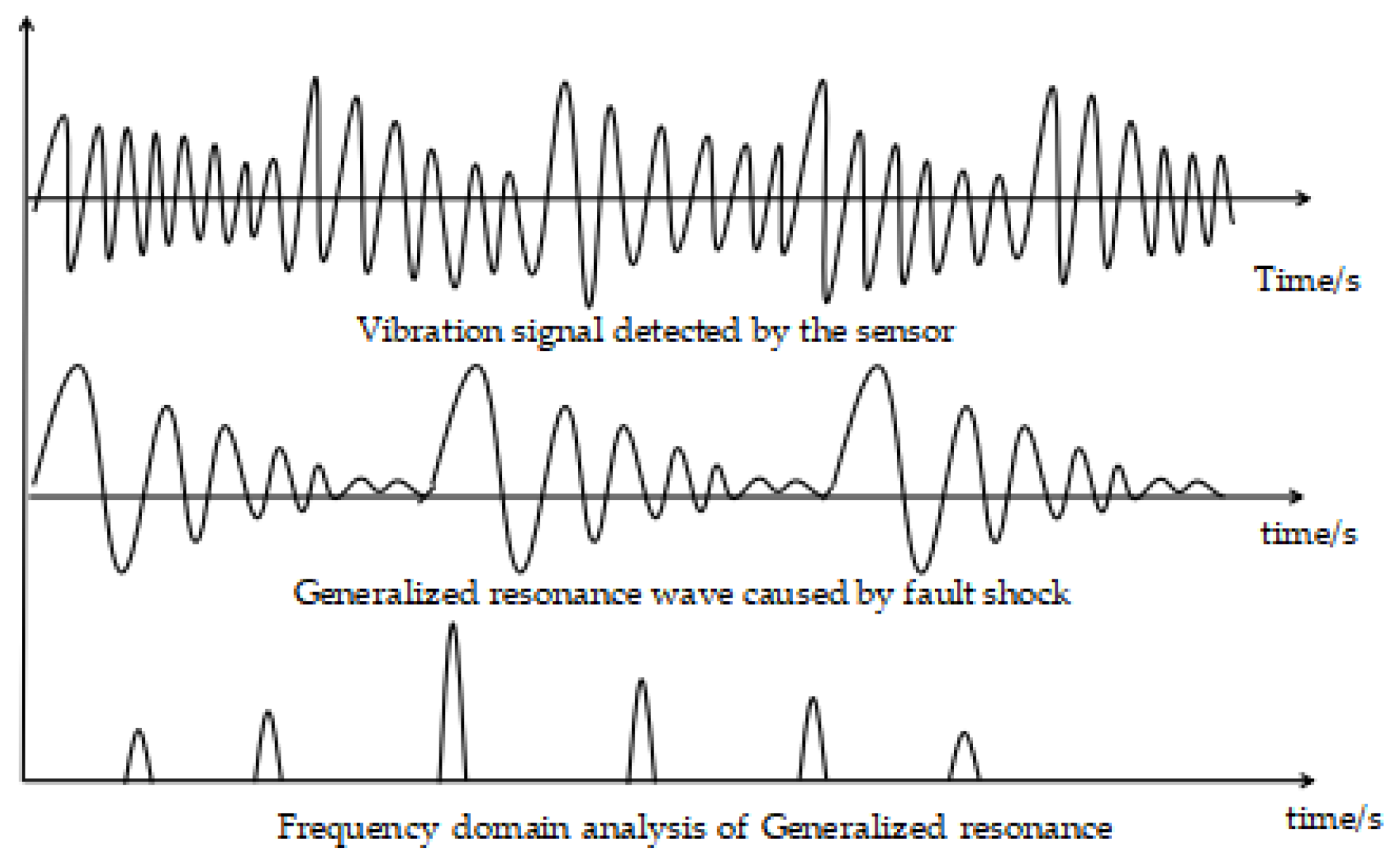
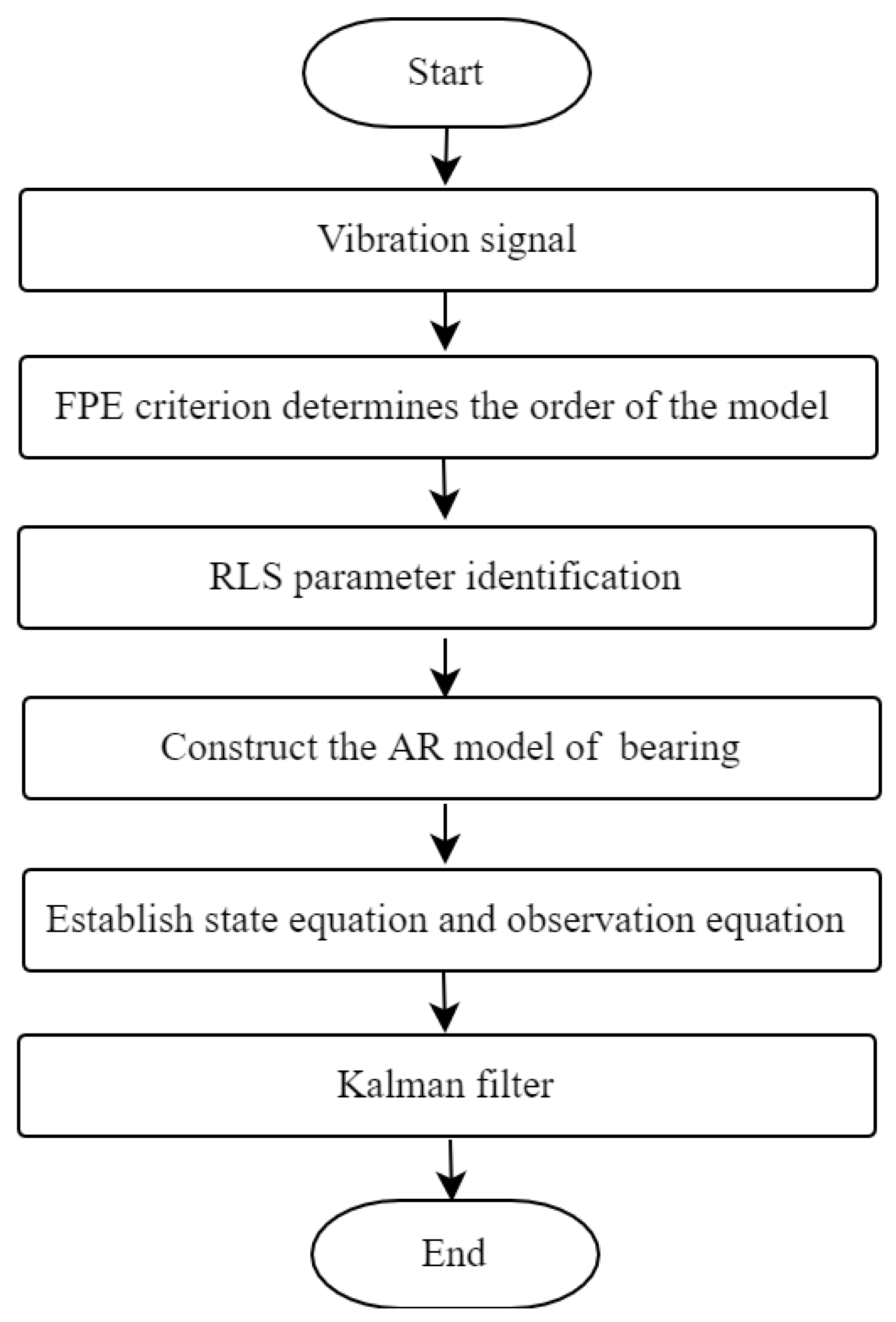
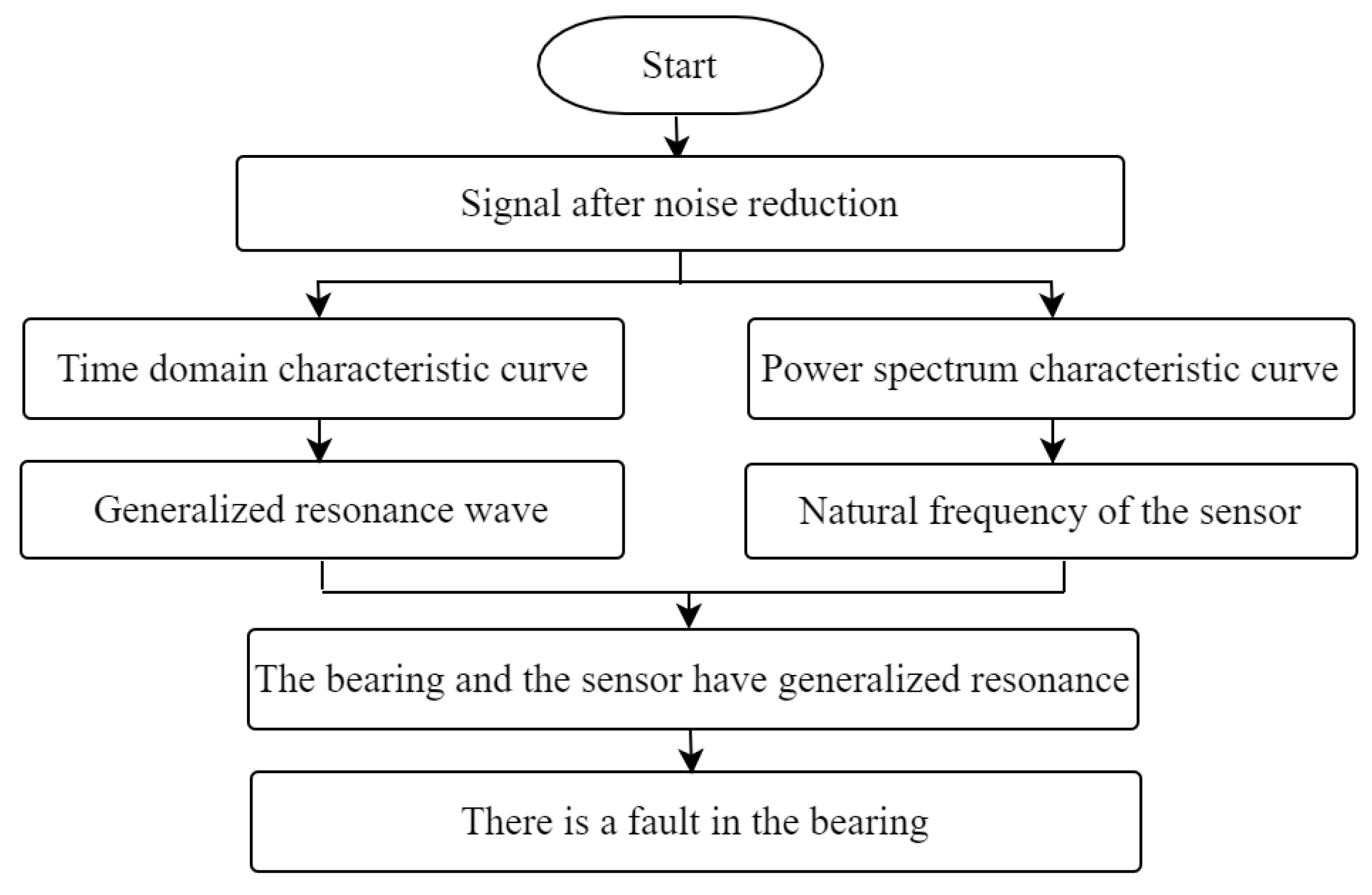

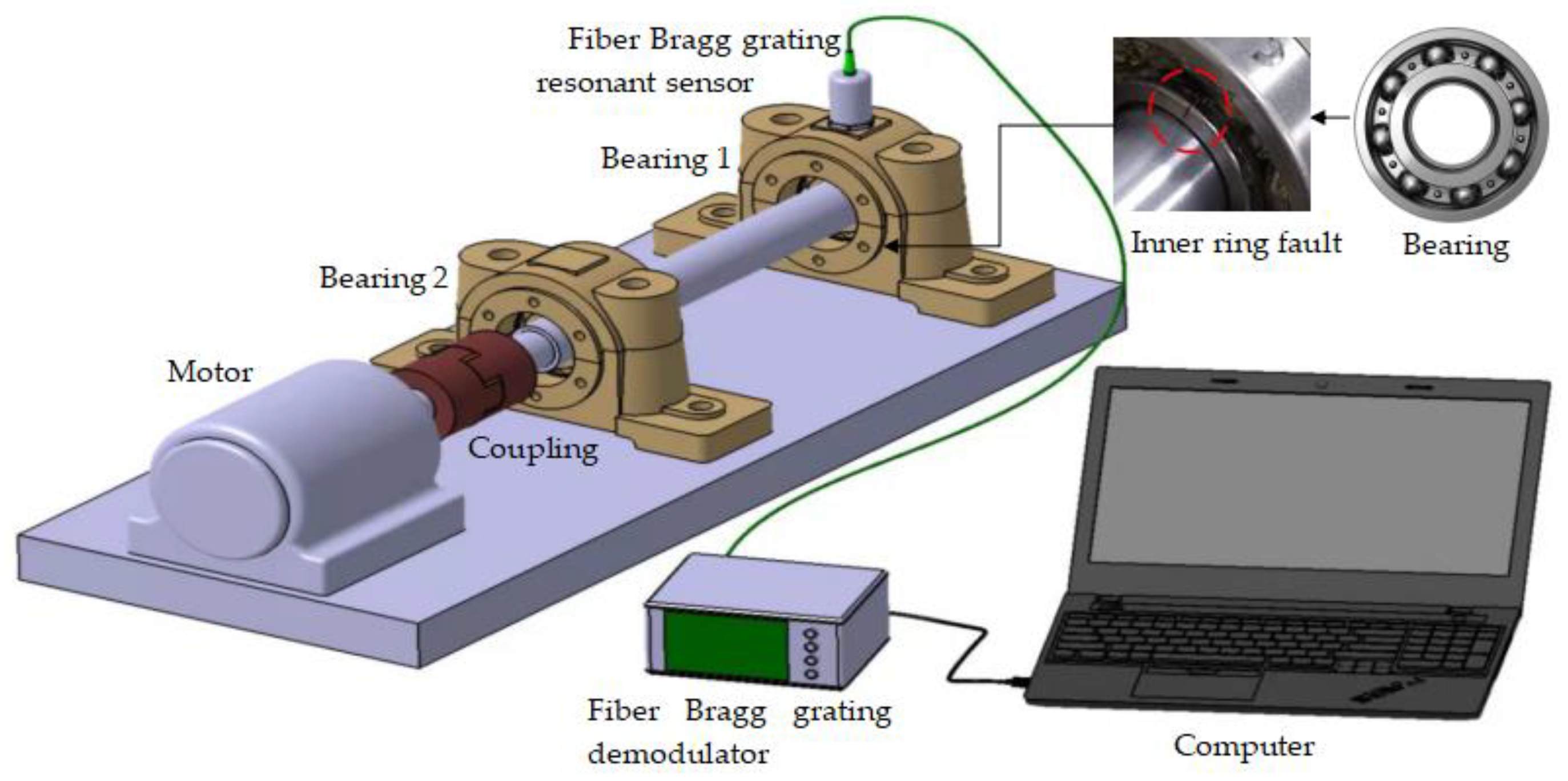
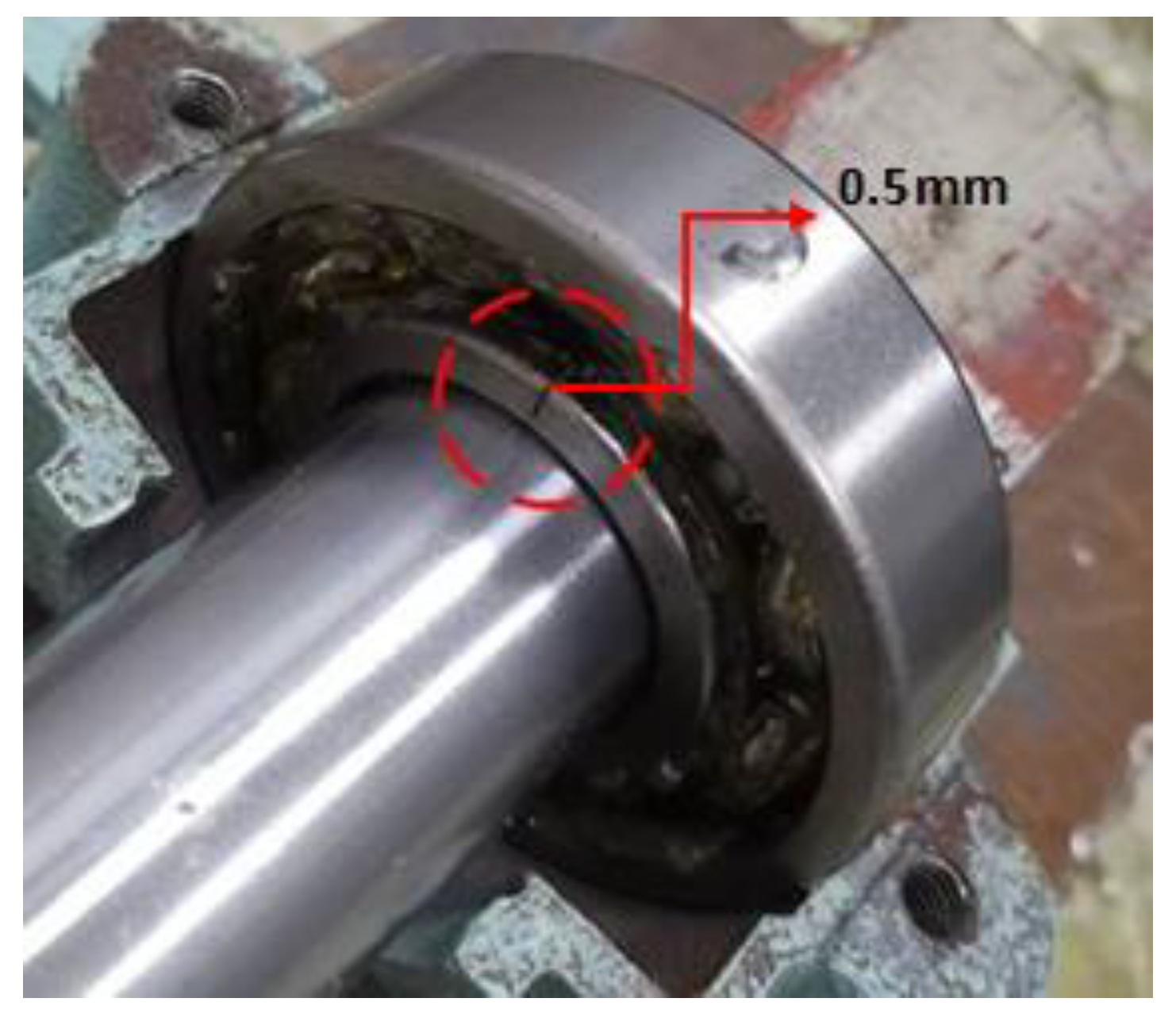

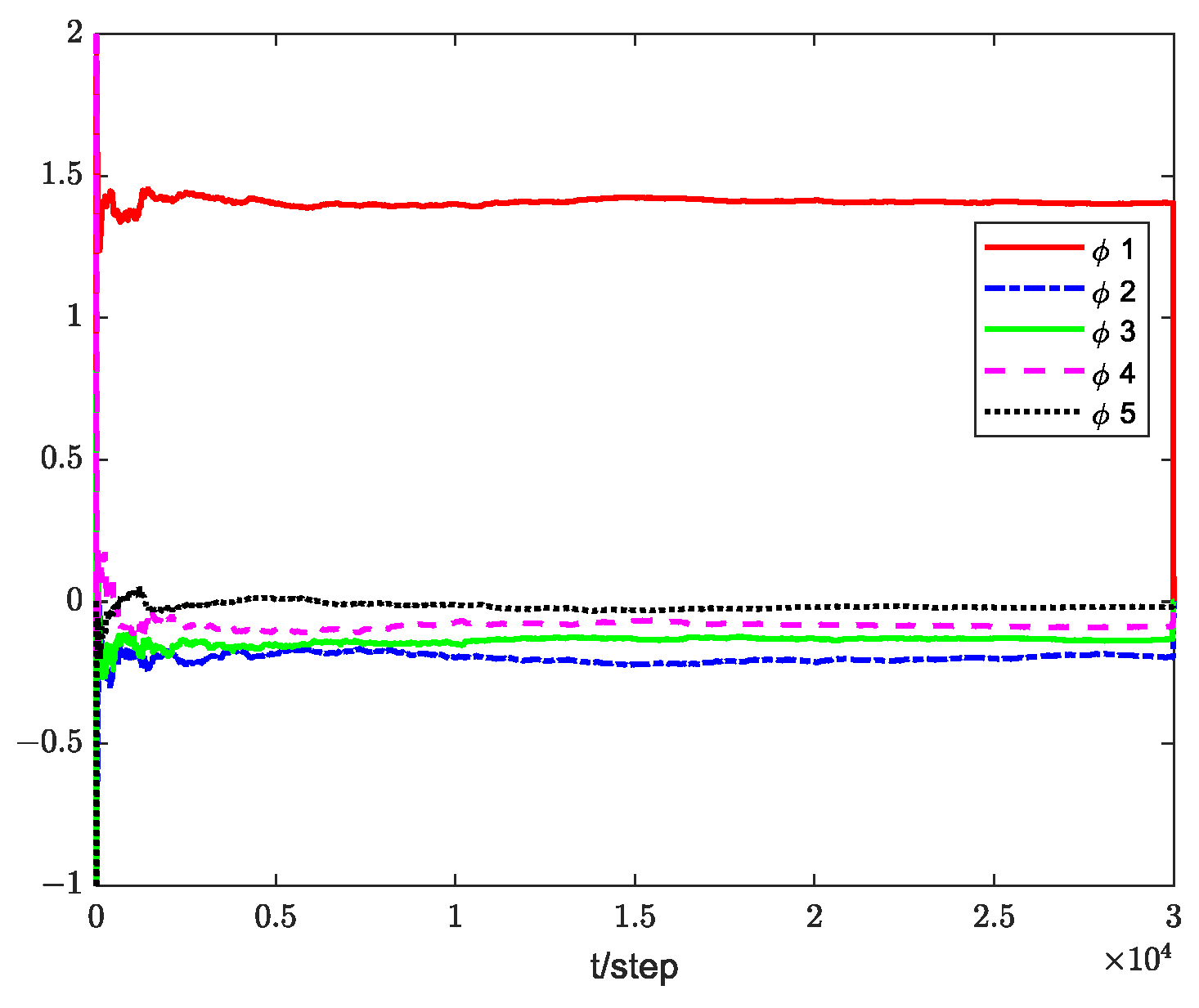
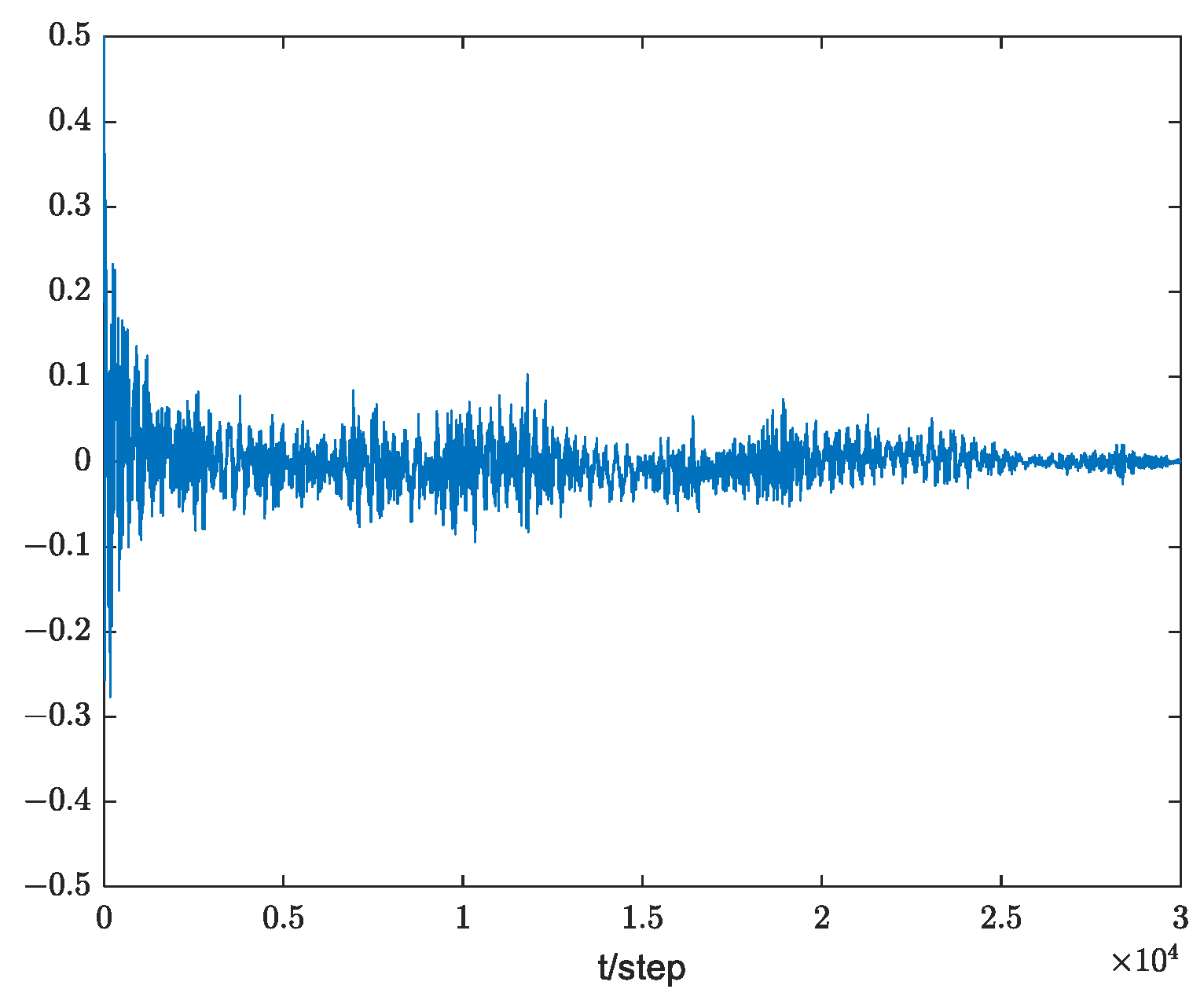
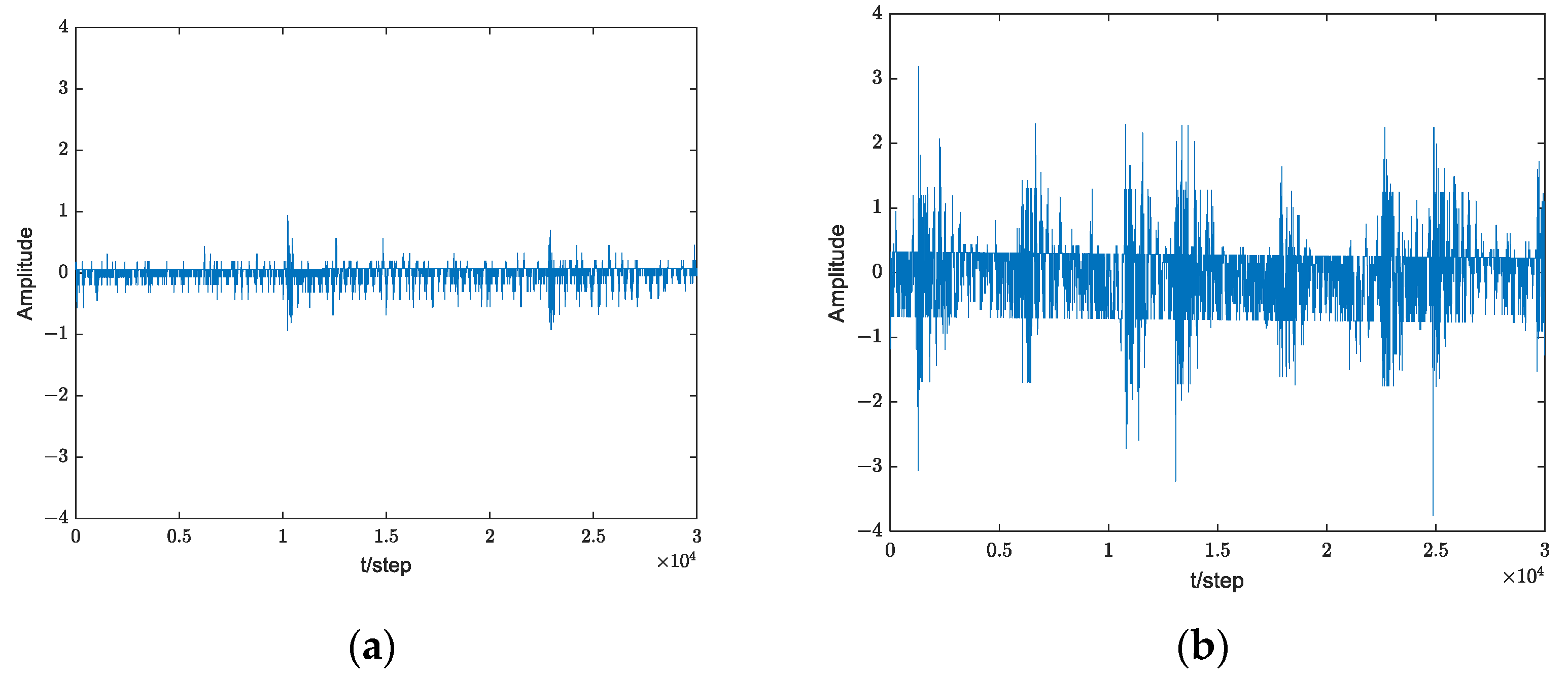
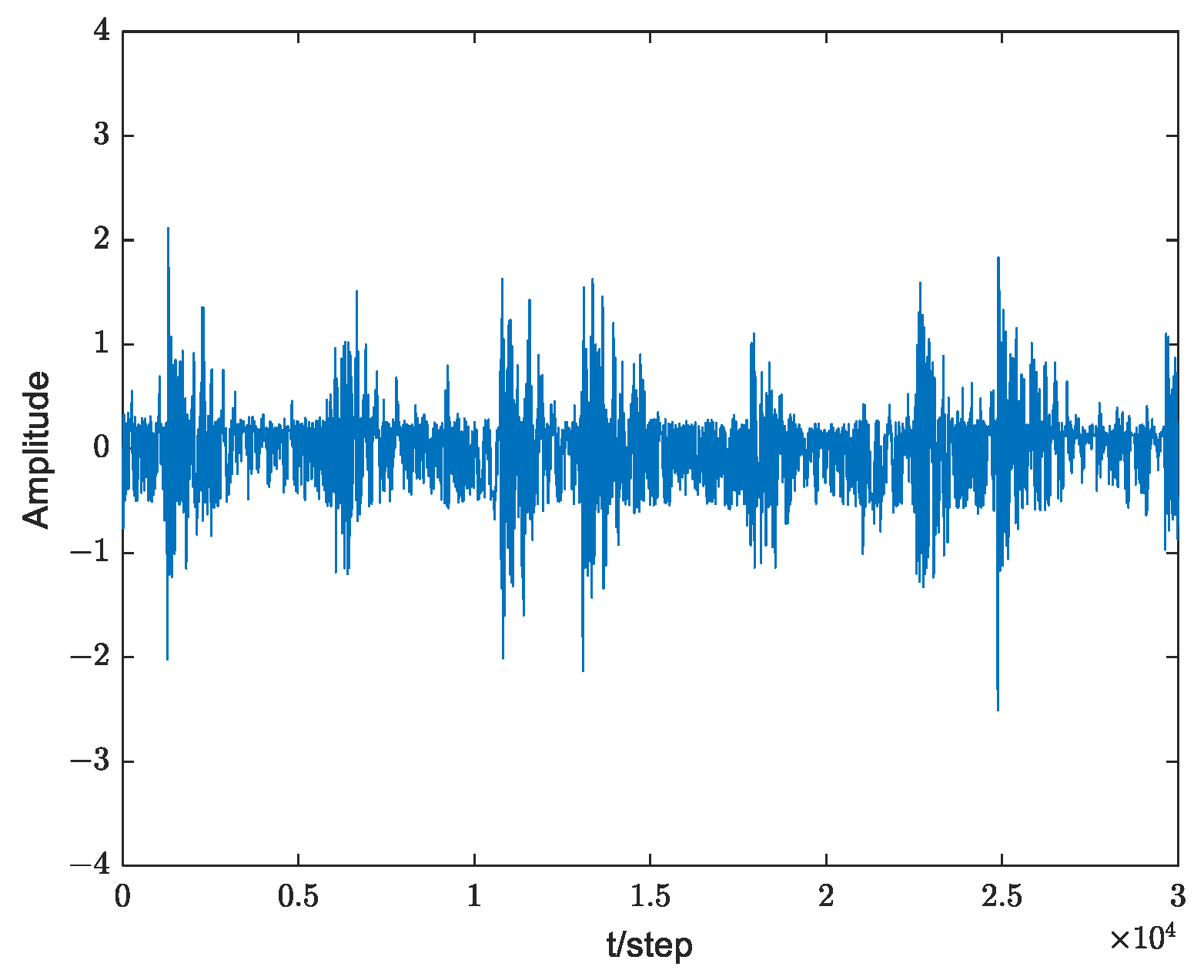

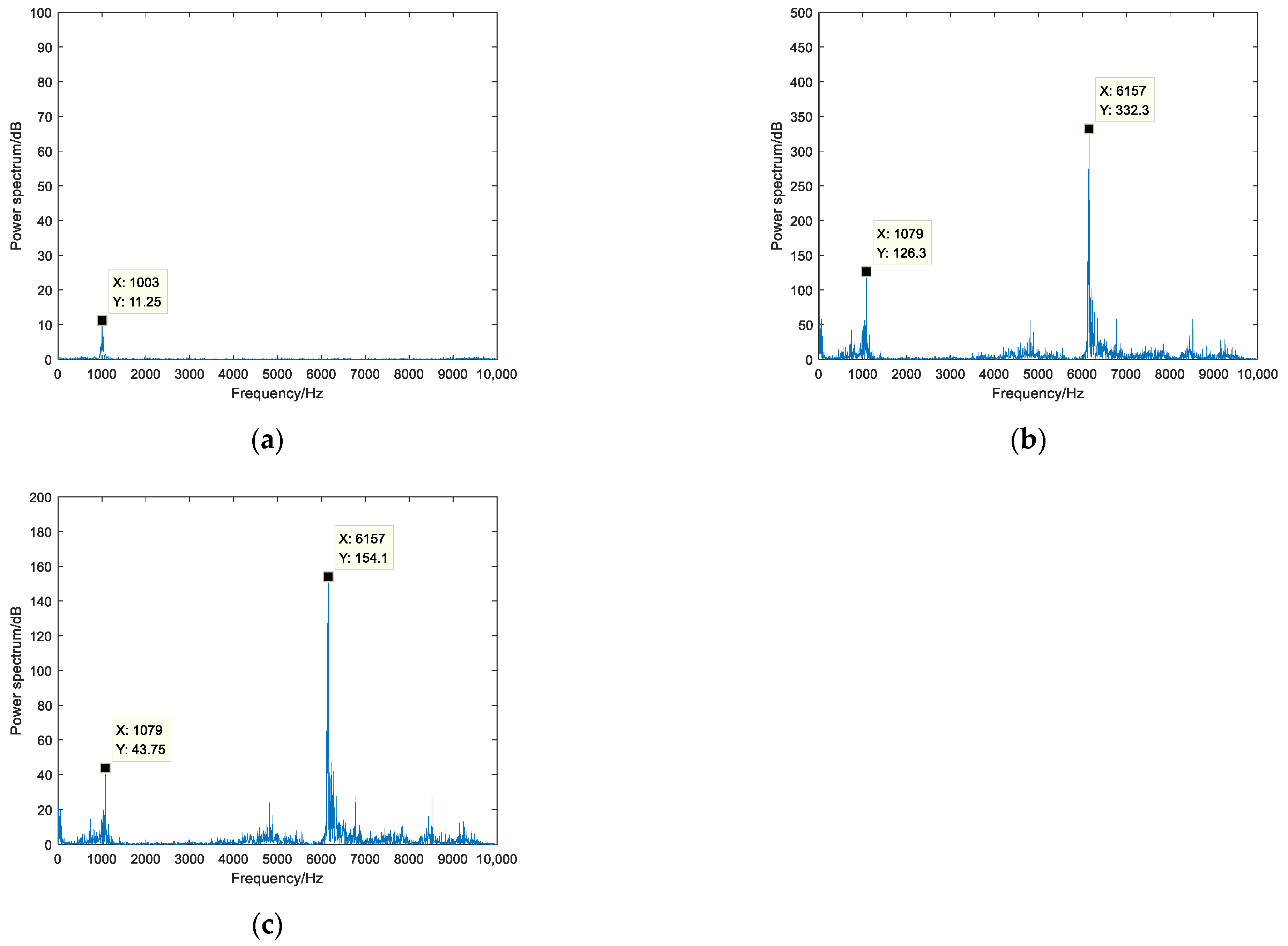
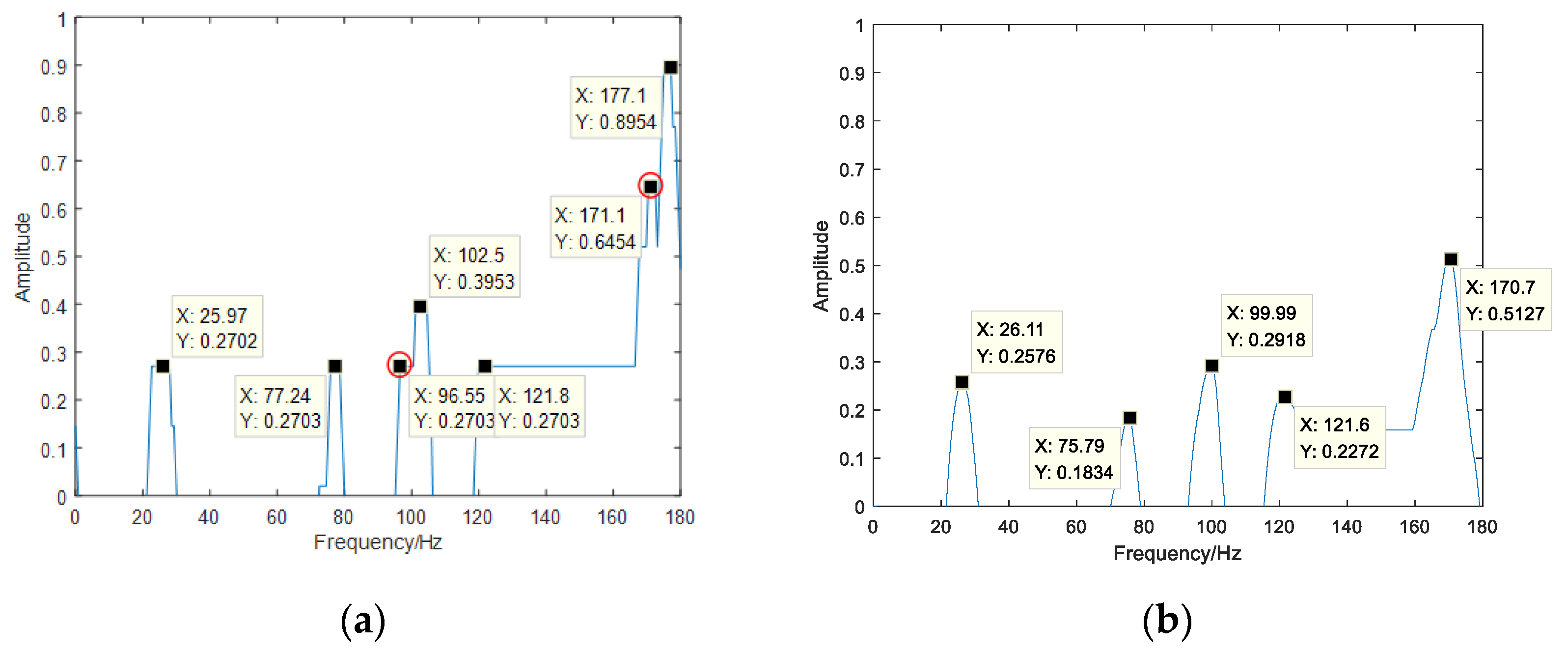
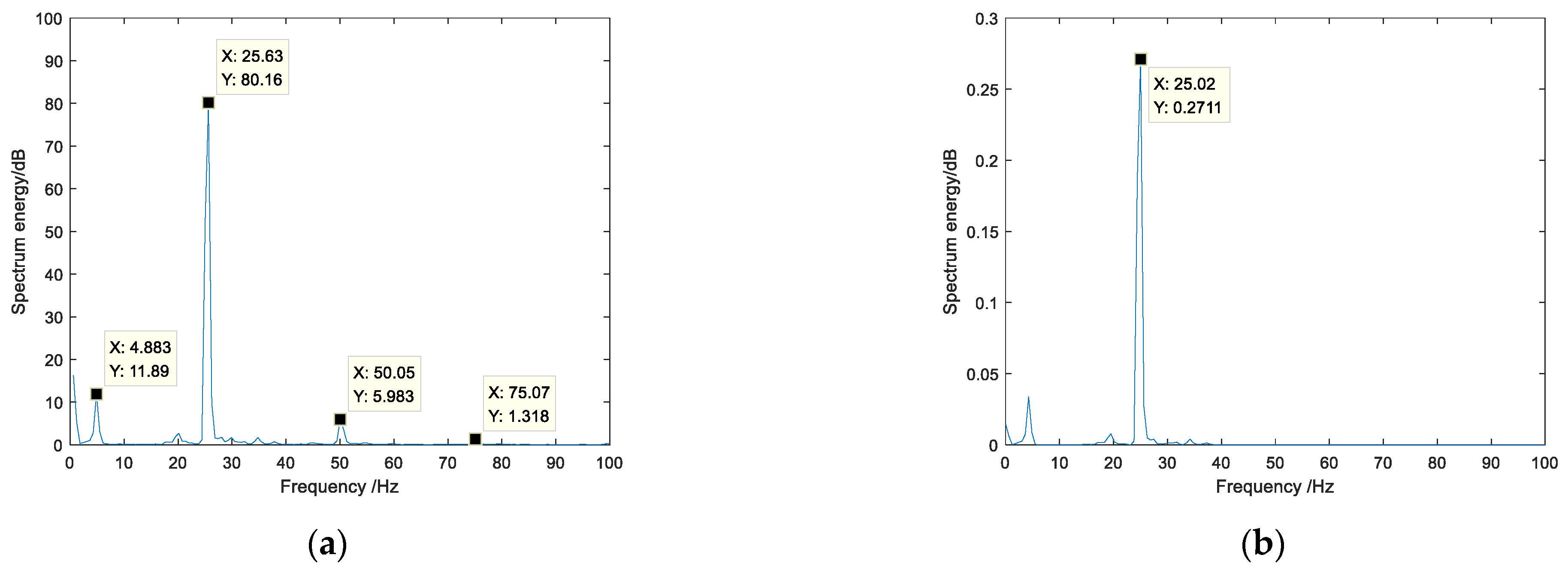
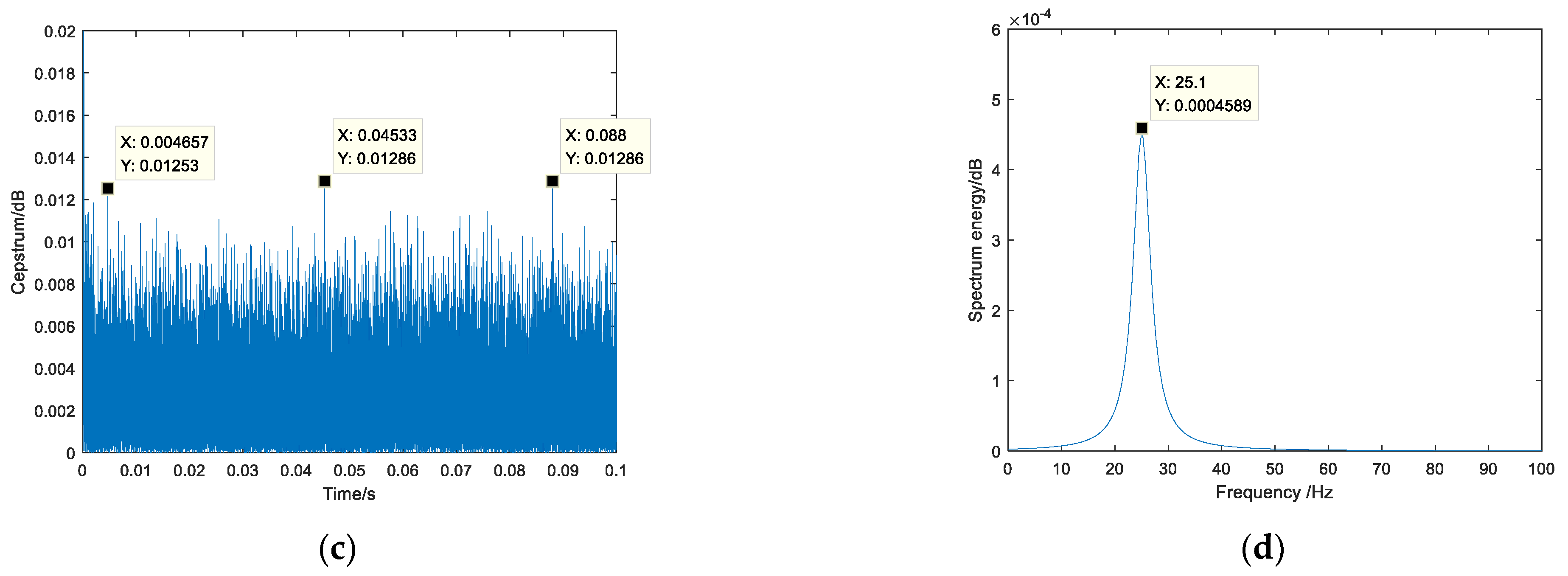
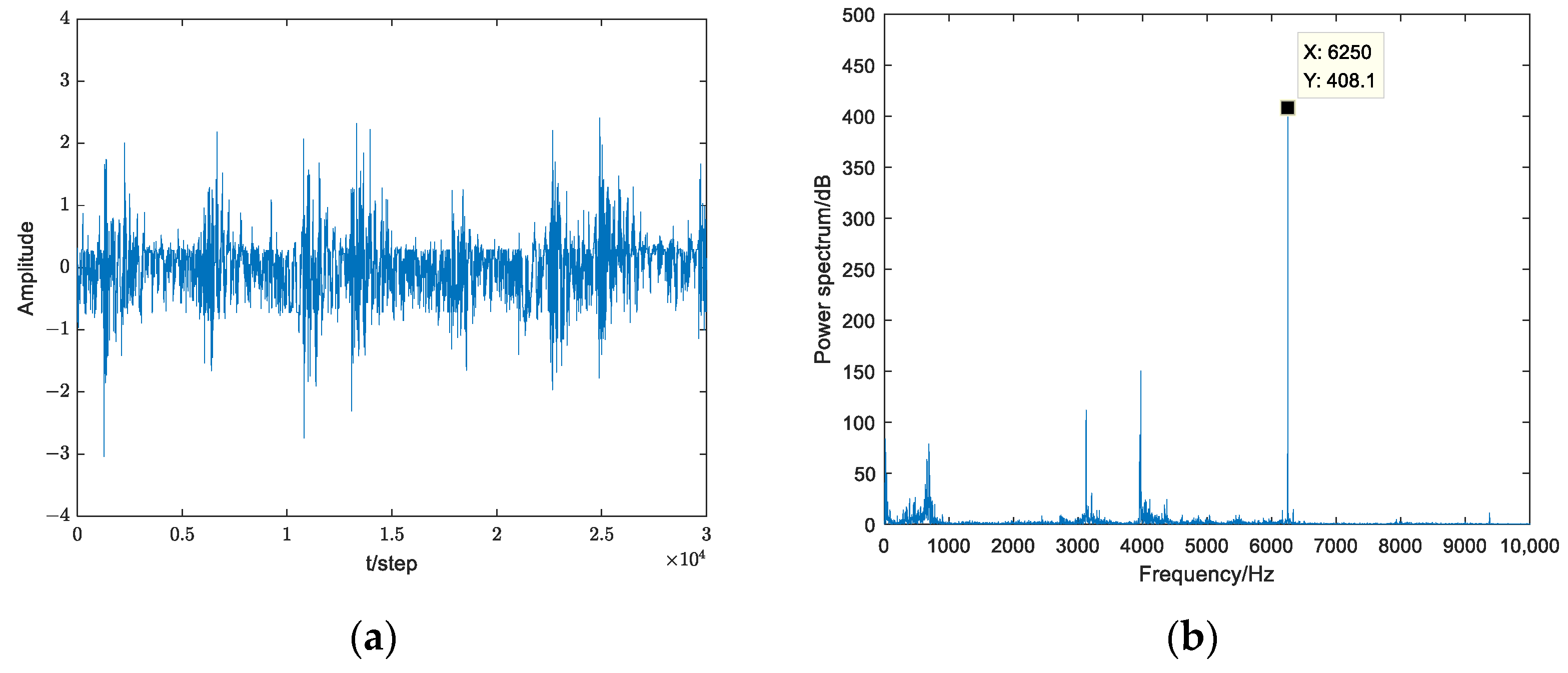
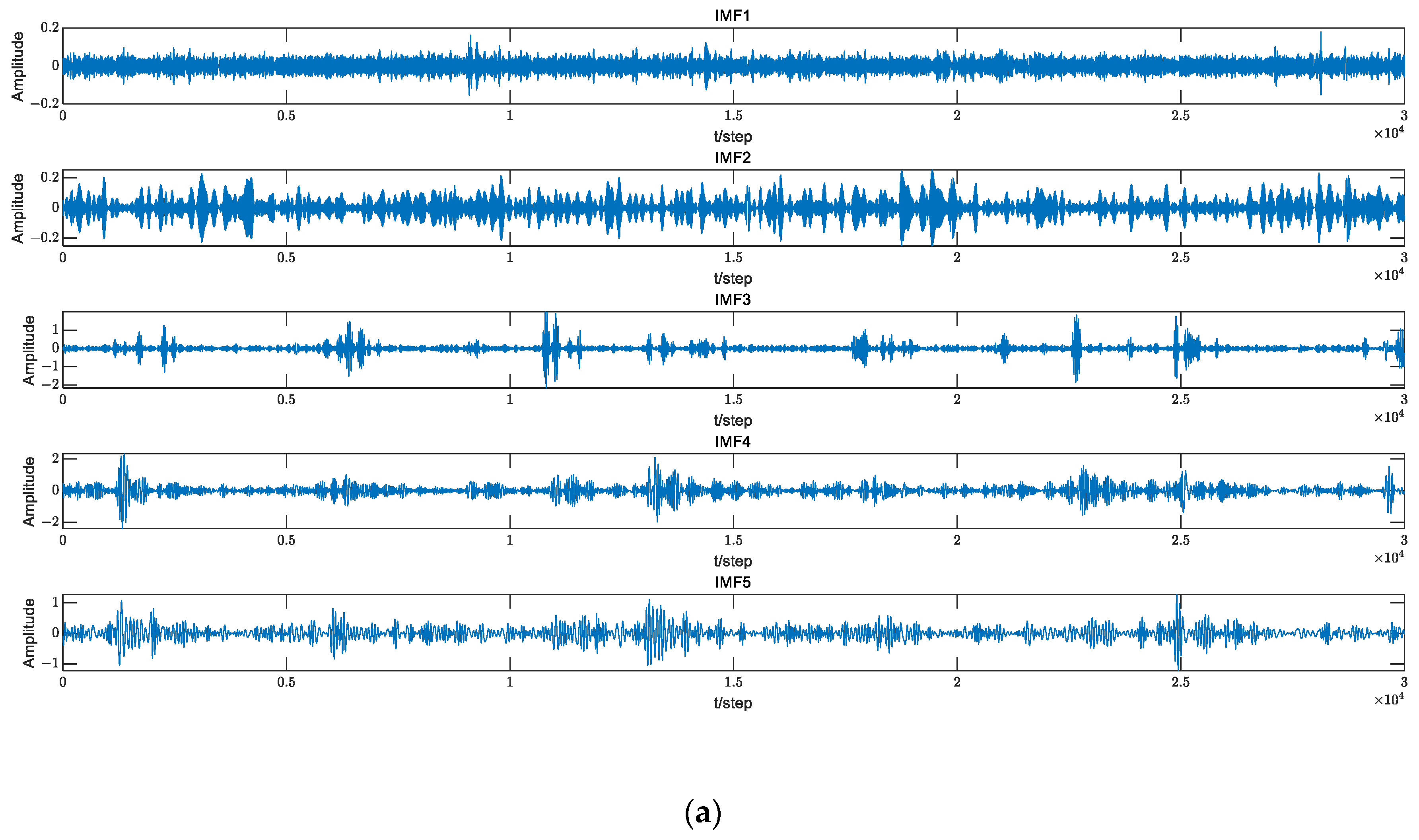
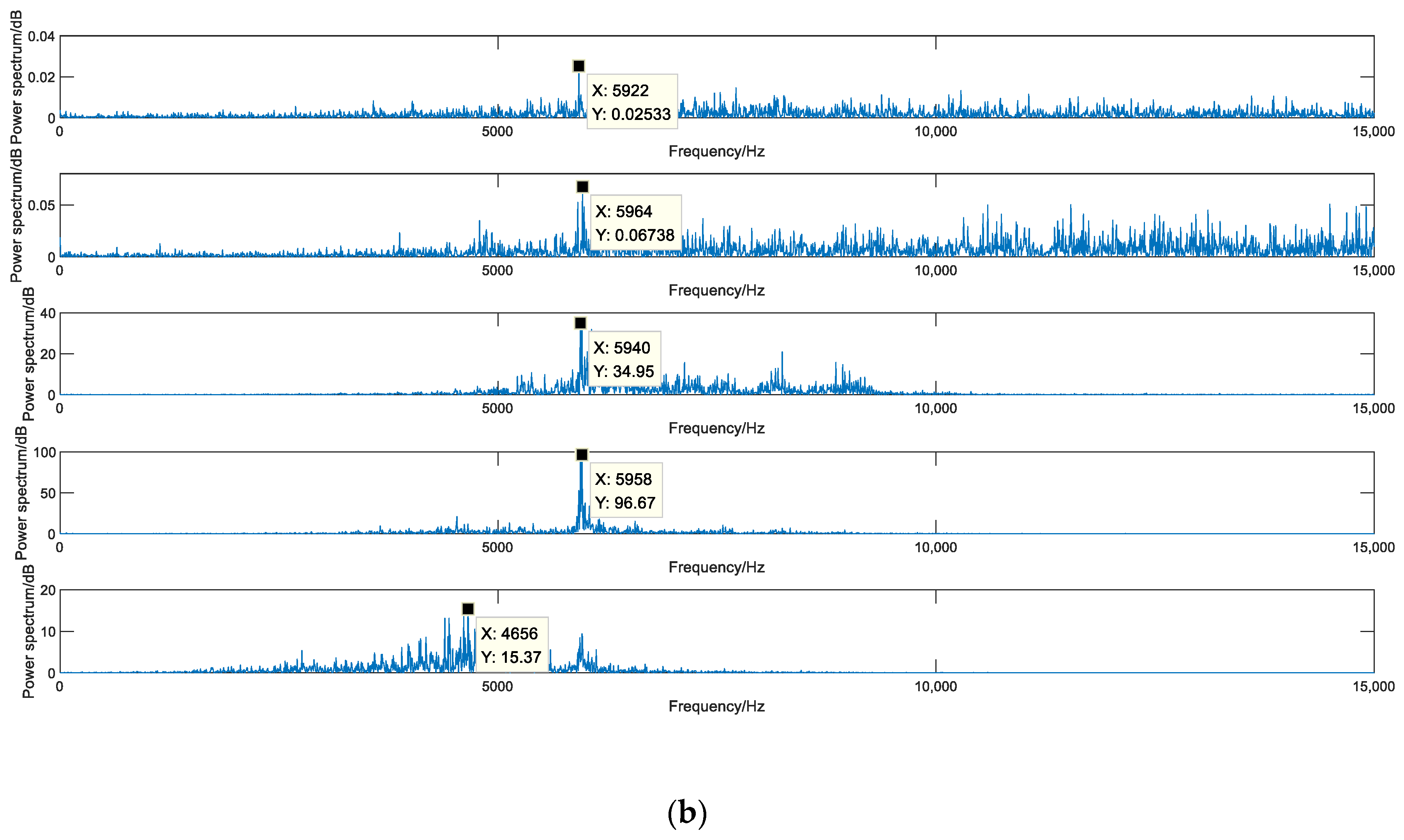
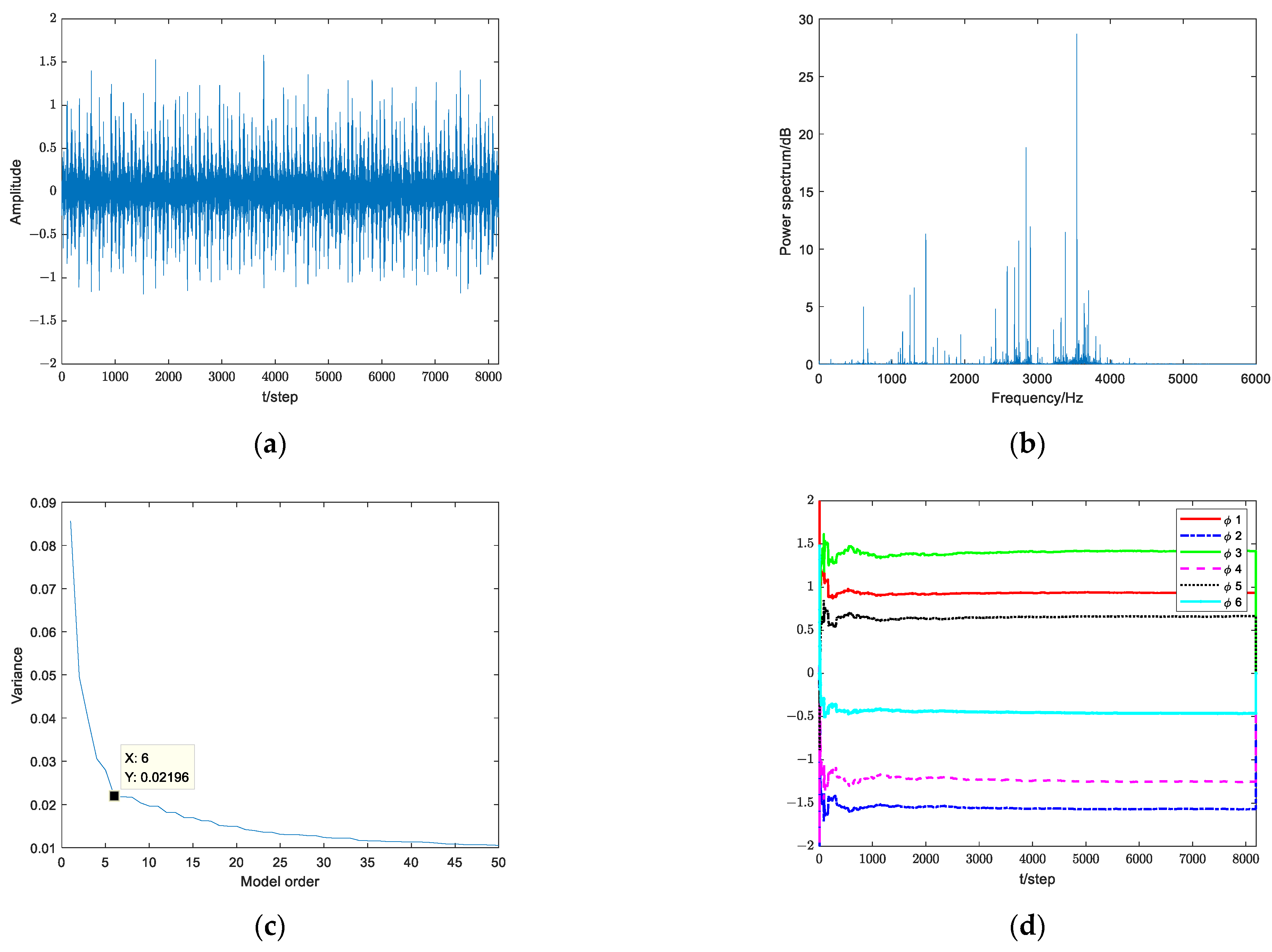
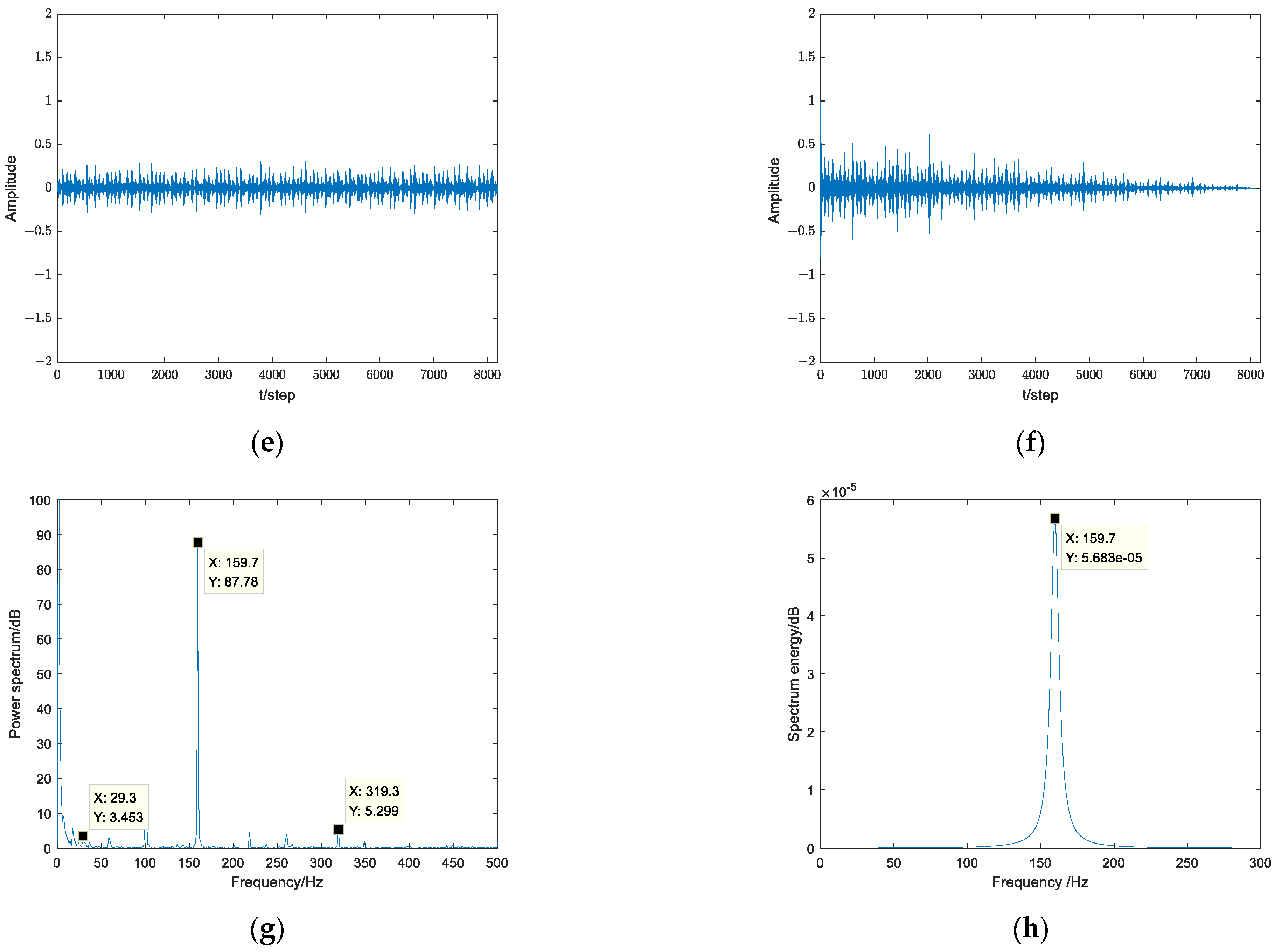


| Fault Type | Formula | Fault Characteristic Frequency |
|---|---|---|
| Inner Ring | 25 Hz | |
| Outer Ring | 15 Hz | |
| Rolling Element | 18.57 Hz | |
| Cage | 1.87 Hz |
| Model Order | SD | MSE |
|---|---|---|
| 0.0635 | 0.0355 | |
| 33 | 0.0558 | 0.0355 |
| Noise Reduction Method | SNR | RMSE |
|---|---|---|
| Kalman filter | 5.6302 | 0.3833 |
| Wavelet transform | 1.7621 | 0.3925 |
| Empirical mode decomposition | 1.7039 | 0.5095 |
Disclaimer/Publisher’s Note: The statements, opinions and data contained in all publications are solely those of the individual author(s) and contributor(s) and not of MDPI and/or the editor(s). MDPI and/or the editor(s) disclaim responsibility for any injury to people or property resulting from any ideas, methods, instructions or products referred to in the content. |
© 2023 by the authors. Licensee MDPI, Basel, Switzerland. This article is an open access article distributed under the terms and conditions of the Creative Commons Attribution (CC BY) license (https://creativecommons.org/licenses/by/4.0/).
Share and Cite
Chen, X.; Sun, S. Resonance Detection Method and Realization of Bearing Fault Signal Based on Kalman Filter and Spectrum Analysis. Appl. Sci. 2023, 13, 1472. https://doi.org/10.3390/app13031472
Chen X, Sun S. Resonance Detection Method and Realization of Bearing Fault Signal Based on Kalman Filter and Spectrum Analysis. Applied Sciences. 2023; 13(3):1472. https://doi.org/10.3390/app13031472
Chicago/Turabian StyleChen, Xinxin, and Shuli Sun. 2023. "Resonance Detection Method and Realization of Bearing Fault Signal Based on Kalman Filter and Spectrum Analysis" Applied Sciences 13, no. 3: 1472. https://doi.org/10.3390/app13031472
APA StyleChen, X., & Sun, S. (2023). Resonance Detection Method and Realization of Bearing Fault Signal Based on Kalman Filter and Spectrum Analysis. Applied Sciences, 13(3), 1472. https://doi.org/10.3390/app13031472






